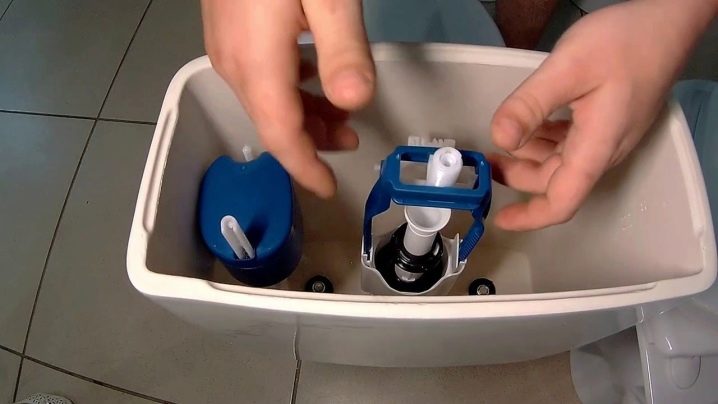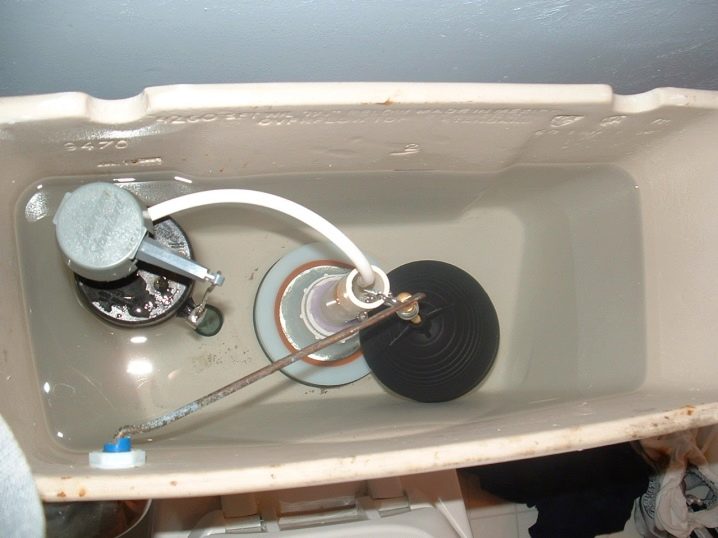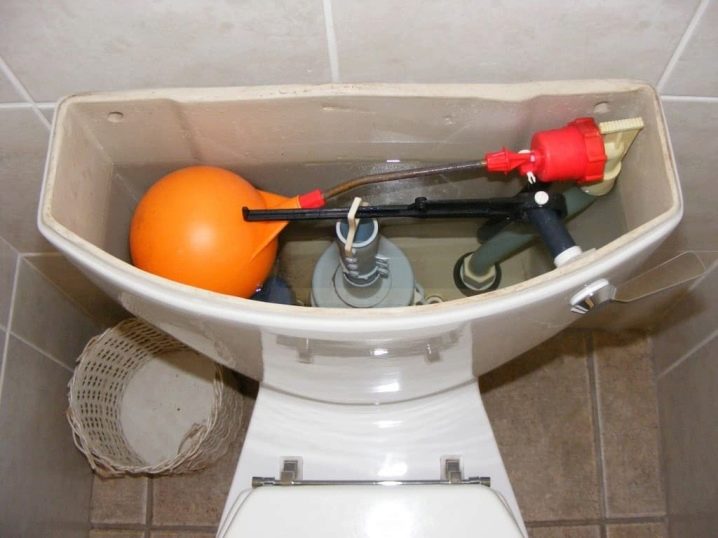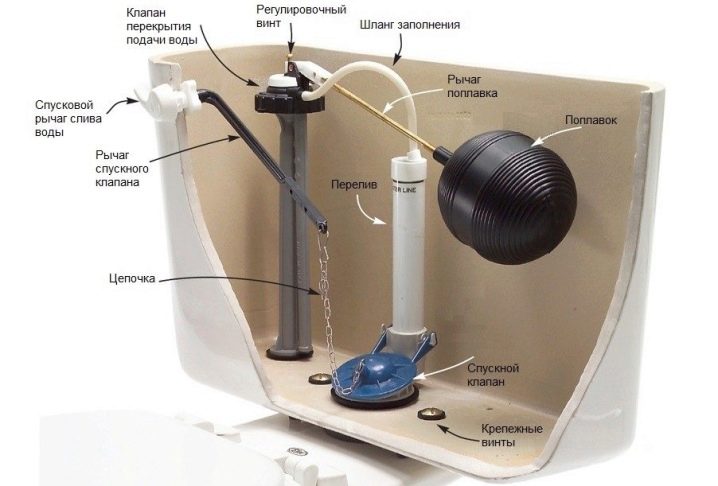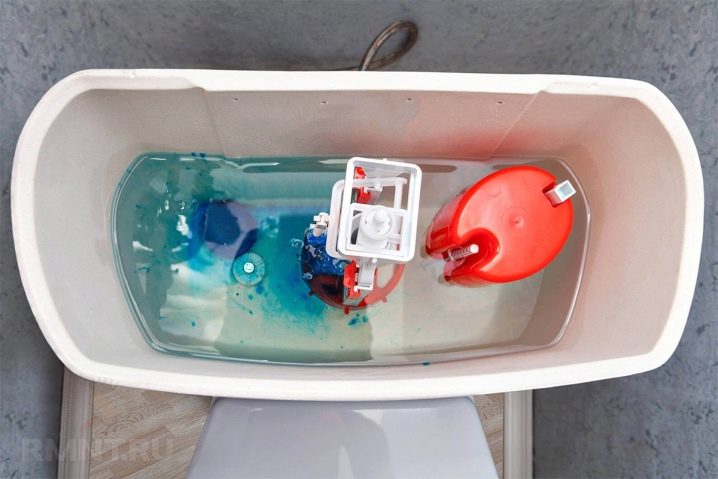What to do if the toilet bowl overflows?
Many people are familiar with the situation when the toilet bowl is continuously making noisy sounds from the fact that it is constantly collected and overflowed with water. If nothing is done with this, the water does not stop at all, and the equipment quickly fails. The consequence of this may also be the fact that the tank is badly drains water. There are several reasons for the occurrence of faults and several solutions to this problem.
The main components and mechanism of operation of the toilet bowl
Modern toilets may differ filling tank, but the basic details and the principle of their work in most cases are similar. The device practically of all tanks does not do without the following components.
- Locking mechanism. This is a tap that automatically turns off the water supply when the tank is filled.For the degree of completeness of the tank, which is a signal for actuation of the shut-off valve, the responsibility lies with the float, which is constantly held on the surface of the water.
- Reset system This mechanism is a valve that blocks the drain hole. The valve is controlled using a button or lever. Modern models of cisterns are equipped with one or two drain buttons.
- Overflow system. During an unforeseen breakdown of the locking mechanism, it ensures that water is drained into the toilet.
Often, new models of the toilet cistern are mounted to the water supply with a lower liner. The main distinguishing feature of such a tank is the presence of a membrane valve. Under the influence of water pressure, it opens slightly and lets water inside.
With optimal water filling, the float exerts a force on the piston rod, which gradually closes the central valve. When the correct water level is established, the valve is completely closed.
Causes of tank overflow and methods for their elimination
Correct and timely identification of the cause of the overflow of the cistern will help to quickly and accurately perform repair work, eliminating the mechanism breakage.
Incorrect setting
Very often, the reason that the water is continuously poured from the tank to the toilet, is the wrong regulation of the float of the locking mechanism or knocking its settings during operation. As a result, the valve does not ensure the overlap of water before it enters the overflow system. In this case, the float must be lowered a step below with the shut-off valve completely closed. Fault correction depends on the locking mechanism model.
If an old-style tank is used, the shut-off valve and the float are connected with a metal lever. In order to change the water level, which is a signal for valve actuation, it is necessary to bend the lever a little manually.
If the lever is plastic and is made of two parts connected by a bolt, loosen the bolt a little, change the angle between the halves and tighten the bolt back.
In tanks of an improved type, the location of the float with respect to the lever is changed by moving it. This will require some effort, perhaps even push the spring locking mechanism.
In order to adjust the float, you will need to disassemble the cover. To do this, you need to pull out the ring, framing the drain button. Plastic tanks of outdated models have clips on the sides.
Depressurization float
After the float is adjusted, make sure that it floats on the surface of the water, and the shutter mechanism works as expected. If, when checking, it turns out that the float is submerged or completely immersed in water, it cannot be adjusted, since its depressurization has occurred. In this case, this part will need to be replaced.
As a rule, the float is replaced with shut-off valves.
The replacement process is carried out in the following order:
- water supply is blocked;
- water from the tank goes down the toilet;
- unscrew the flexible connection;
- the nut securing the stop valve is unscrewed;
- removed valves;
- installation of a working mechanism is carried out in the opposite direction.
Locking mechanism malfunction
To make sure that the stop valve is working properly and shut off the water, it is necessary to carry out some activities:
- drain the tank;
- as much as possible to raise the lever;
- check the flow of water through the valve.
If, after lifting the lever, the liquid continues to flow, then the shut-off valve is non-working, and it should be replaced in the above order of installation.
With regular leakage of water in the tank, as a rule, it is required to replace the rubber gasketwhich is used to seal the drain hole. The resulting rupture or weakening of the adjacent density can cause leaks. Sometimes after prolonged use, the exhaust valve can be deformed. In this case, the replacement of the whole mechanism will be required.
Also, the reason for the transfusion of water into the toilet can be the lowering of the emergency tube, which serves to get rid of excess fluid. That is, if the inlet valve and the float system are out of order, a continuous flow of water will flow directly into the toilet, preventing the room from being flooded.
See the following video for how to repair the drain tank.

